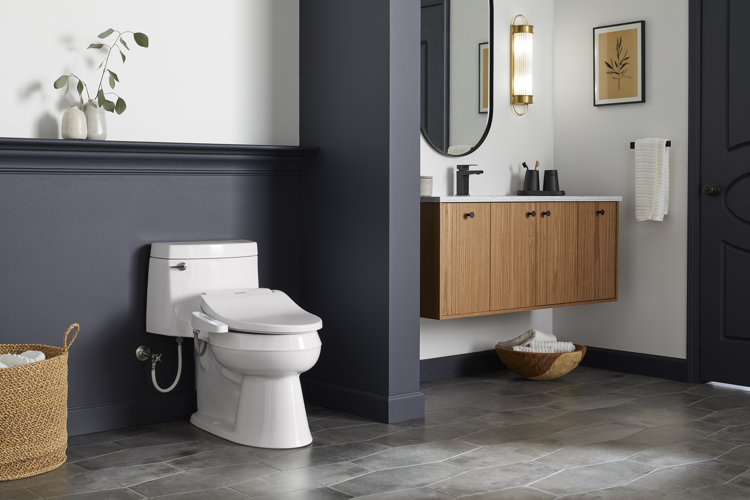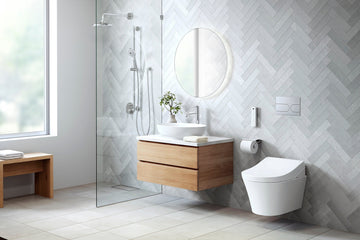In the fast-paced world of restroom management, toilet occupancy sensors are becoming an indispensable tool. These sensors provide real-time data on restroom usage, helping facilities optimize their maintenance schedules and improve user experience. For industry QA professionals, understanding the intricacies of toilet occupancy sensors is crucial for maintaining high standards of hygiene and efficiency.
As the demand for smart restroom solutions grows, the implementation of advanced technologies like toilet occupancy sensors is transforming how businesses manage their facilities. With the ability to monitor restroom usage remotely, facility managers can now make informed decisions that enhance both operational efficiency and customer satisfaction. Let's delve deeper into the workings of these sensors and their impact on the industry.

How Do Toilet Occupancy Sensors Work?
Toilet occupancy sensors utilize a variety of technologies to detect when a restroom stall is occupied. Common methods include infrared sensors, pressure sensors, and door latch sensors. These devices are strategically placed to ensure accuracy and reliability in detecting occupancy.
Infrared sensors work by detecting body heat or movement within the stall, while pressure sensors are installed under the floor to sense the weight of an occupant. Door latch sensors, on the other hand, monitor the position of the stall door to determine occupancy status. Each method has its advantages and is chosen based on the specific needs of the facility.
Benefits of Implementing Toilet Occupancy Sensors
The benefits of using toilet occupancy sensors are manifold. First and foremost, they enhance restroom cleanliness by allowing for timely cleaning and maintenance. By knowing when a restroom is frequently used, cleaning staff can prioritize high-traffic areas, ensuring they are always in top condition.
Additionally, these sensors contribute to energy efficiency by reducing the need for constant lighting and ventilation in unoccupied restrooms. Facilities can save on energy costs by only activating these systems when necessary. This not only benefits the environment but also reduces operational expenses.
Moreover, the data collected by toilet occupancy sensors can inform long-term planning and resource allocation. Facility managers can analyze usage patterns to make strategic decisions about restroom upgrades and expansions, ultimately leading to improved customer satisfaction.
Industry Applications and Innovations
The use of toilet occupancy sensors is not limited to traditional public restrooms. They are increasingly being integrated into smart building systems and innovative restroom solutions. For instance, in the realm of tiny house toilet innovations, these sensors play a crucial role in managing limited space efficiently.
Similarly, in self-cleaning public toilet pods, occupancy sensors trigger cleaning cycles only when necessary, conserving water and cleaning agents. This not only enhances the sustainability of these systems but also ensures a clean and pleasant user experience.
Furthermore, toilet occupancy sensors are pivotal in queue management with smart toilets. By providing real-time data on restroom availability, these sensors help reduce wait times and improve customer flow in high-traffic areas.

The Future of Toilet Occupancy Sensors
As technology continues to evolve, so too will the capabilities of toilet occupancy sensors. Future advancements may include integration with mobile apps, allowing users to check restroom availability from their smartphones. This would not only enhance user convenience but also streamline restroom management for facilities.
Moreover, the data collected by these sensors could be used to develop predictive maintenance models, identifying potential issues before they occur. This proactive approach would minimize downtime and ensure that restrooms are always in optimal condition.
In conclusion, toilet occupancy sensors are a game-changer in the realm of restroom management. By providing real-time data, enhancing cleanliness, and improving energy efficiency, these sensors are revolutionizing how facilities operate. For industry QA professionals, staying abreast of these technological advancements is essential for maintaining high standards and ensuring customer satisfaction.
FAQs
How do toilet occupancy sensors improve restroom cleanliness?
Toilet occupancy sensors enable cleaning staff to prioritize high-traffic areas, ensuring they are cleaned more frequently and thoroughly, thus maintaining higher cleanliness standards.
Can toilet occupancy sensors be integrated with other smart systems?
Yes, toilet occupancy sensors can be integrated with smart building systems to enhance overall facility management, including energy efficiency and predictive maintenance.
What are the cost benefits of using toilet occupancy sensors?
By optimizing cleaning schedules and reducing unnecessary energy consumption, toilet occupancy sensors can lead to significant cost savings for facilities.
This article contains affiliate links. We may earn a commission at no extra cost to you.






